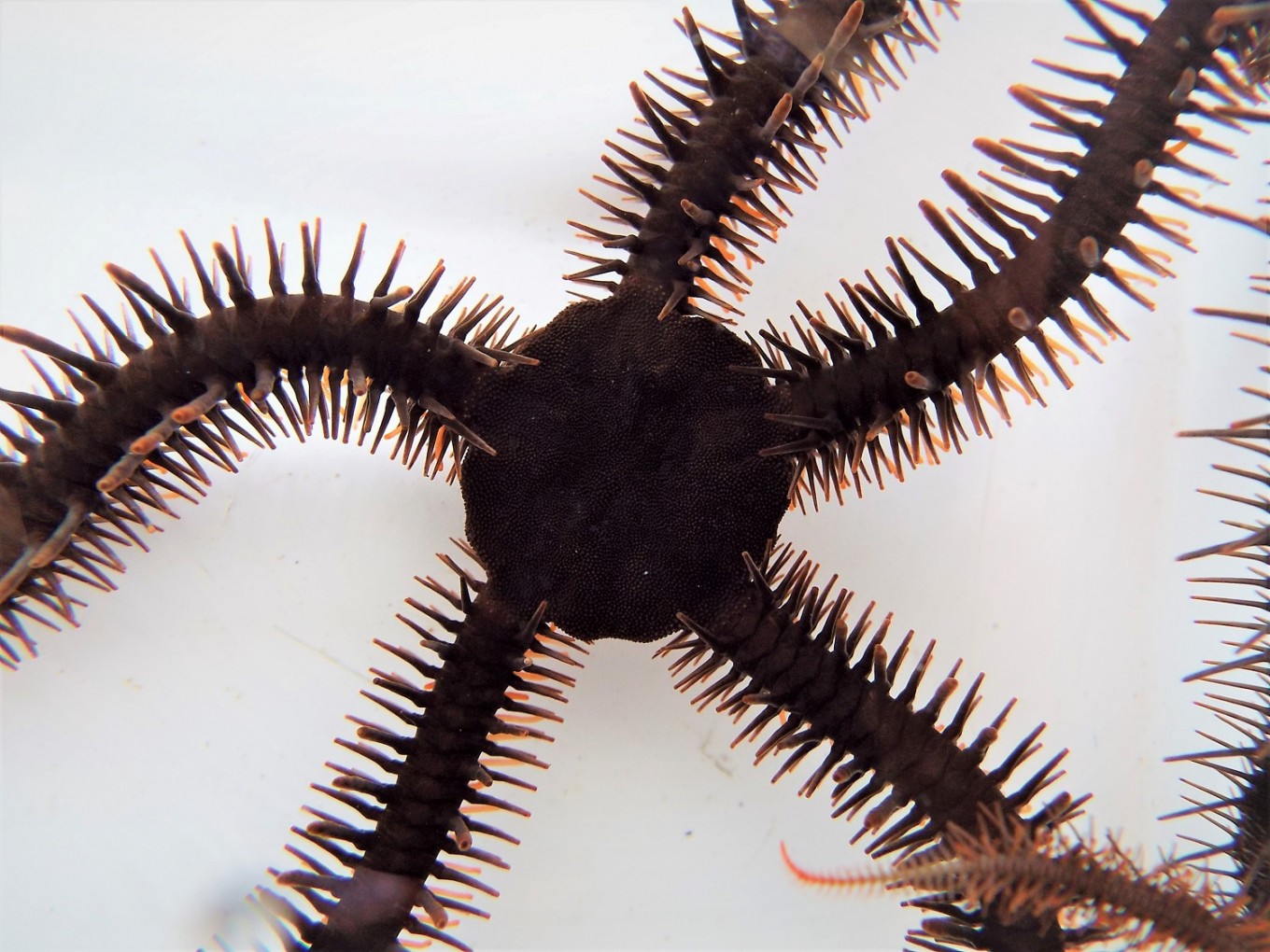Popular Reads
Top Results
Can't find what you're looking for?
View all search resultsPopular Reads
Top Results
Can't find what you're looking for?
View all search resultsNo eyes? No problem. Marine creature expands boundaries of vision
A cousin of the starfish that resides in the coral reefs of the Caribbean and Gulf of Mexico lacks eyes, but can still see.
Change text size
Gift Premium Articles
to Anyone
 A red brittle star, Ophiocoma wendtii, is seen in this image released on January 2, 2020. A cousin of the sea star and sea cucumber, this species that lives among the coral reefs of the Caribbean is one of two known animals that lack eyes but still possess the ability to see. (Handout via REUTERS/Lauren Sumner-Rooney)
A red brittle star, Ophiocoma wendtii, is seen in this image released on January 2, 2020. A cousin of the sea star and sea cucumber, this species that lives among the coral reefs of the Caribbean is one of two known animals that lack eyes but still possess the ability to see. (Handout via REUTERS/Lauren Sumner-Rooney)
A
cousin of the starfish that resides in the coral reefs of the Caribbean and Gulf of Mexico lacks eyes, but can still see, according to scientists who studied this creature that expands the boundaries of the sense of sight in the animal kingdom.
Researchers said on Thursday that the red brittle star, called Ophiocoma wendtii, is only the second creature known to be able to see without having eyes - known as extraocular vision - joining a single species of sea urchin.
It possesses this exotic capability thanks to light-sensing cells, called photoreceptors, covering its body and pigment cells, called chromatophores, that move during the day to facilitate the animal's dramatic color change from a deep reddish-brown in daytime to a stripy beige at nighttime.
Brittle stars, with five radiating arms extending from a central disk, are related to starfish (also called sea stars), sea cucumbers, sea urchins and others in a group of marine invertebrates called echinoderms. They have a nervous system but no brain.
The red brittle star - up to about 14 inches (35 cm) from arm tip to arm tip - lives in bright and complex habitats, with high predation threats from reef fish. It stays hidden during daytime - making the ability to spot a safe place to hide critical - and comes out at night to feed on detritus.
Read also: Scientists spot six near-extinct vaquita marinas
Its photoreceptors are surrounded during daytime by chromatophores that narrow the field of the light being detected, making each photoreceptor like the pixel of a computer image that, when combined with other pixels, makes a whole image. The visual system does not work at night, when the chromatophores contract.
"If our conclusions about the chromatophores are correct, this is a beautiful example of innovation in evolution," said Lauren Sumner-Rooney, a research fellow at Oxford University Museum of Natural History who led the study published in the journal Current Biology.
Laboratory experiments indicated the brittle stars have rudimentary vision. Placed in a circular arena, they moved toward walls that were white with a black bar, suggestive of a daytime hiding place.
Another scenario showed they were not simply detecting brightness versus darkness. When they were presented with gray walls making it so no part of the arena was lighter or darker overall, they still moved toward the black stripe, which was centered on a white stripe so as to reflect the same amount of light as the gray.
"It's such an alien concept for us, as very visually driven animals, to conceive of how an animal might see its habitat without eyes, but now we know of two examples," Sumner-Rooney added.










